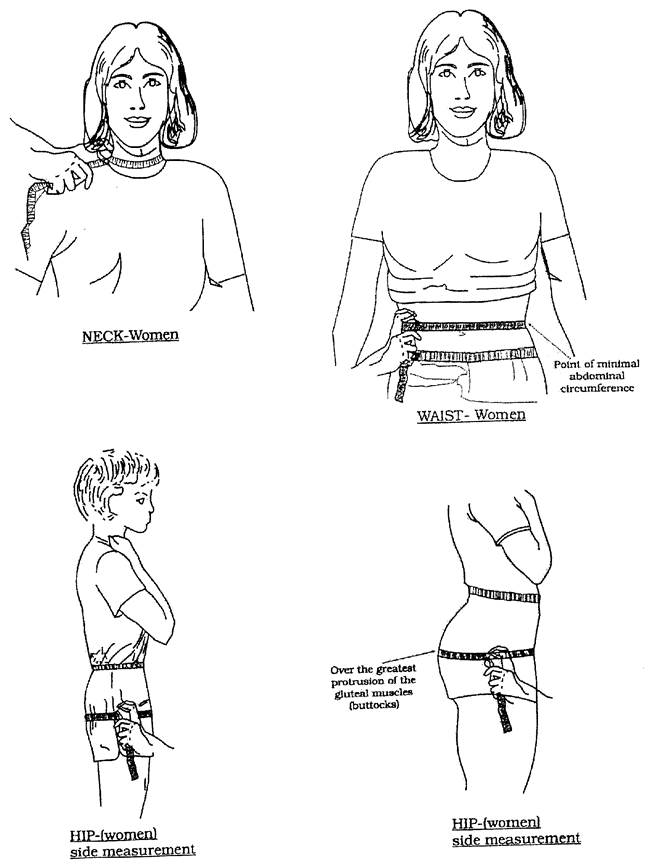Appendix B Standard Methods for Determining Body Fat Using Body Circumferences, Height, and Weight
B–1. Introduction
a. The procedures for the measurements of height, weight, and specific body circumferences for the estimation of body fat are described in this appendix.
b. Although circumferences may be looked upon by untrained personnel as easy measures, they can give erroneous results if proper precautions are not followed. The individual taking the measurements must have a thorough understanding of the appropriate body landmarks and measurement techniques. Unit commanders will require that designated personnel have hands-on training and read the instructions regarding technique and location and practice before official determinations are made. Two members of the unit will be utilized in the taking of measurements, one to place the tape measure and determine measurements, the other to assure proper placement and tension of the tape, as well as to record the measurement on the worksheet (DA Form 5500 (Body Fat Content Worksheet (Male) and DA Form 5501 (Body Fat Content Worksheet (Female)). The individual taking the measurements will be of the same sex as the Soldier being measured; the individual who assists the measurer and does the recording may be of either sex. The two will work with the Soldier between them so the tape is clearly visible from all sides. Take all circumference measurements three times and record them to the nearest 1⁄2 inch. If any one of the three closest measurements differs by more than 1 inch from the other two, take an additional measurement and compute a mathematical average of the three measurements with the least difference to the nearest 1⁄2 inch and record this value.
c. When measuring circumferences, compression of the soft tissue is a problem that requires constant attention. The tape will be applied so that it makes contact with the skin and conforms to the body surface being measured. It will not compress the underlying soft tissues. Note, however, that in the hip circumference more firm pressure is needed to compress gym shorts. All measurements are made in the horizontal plane (parallel to the floor), unless indicated otherwise.
d. The tape measure will be made of a nonstretchable material, preferably fiberglass; cloth or steel tapes are unacceptable. Cloth measuring tapes will stretch with usage and most steel tapes do not conform to body surfaces. The tape measure will be calibrated—that is, compared with a yardstick or a metal ruler to ensure validity. This is done by aligning the fiberglass tape measure with the quarter inch markings on the ruler. The markings will match those on the ruler; if not, do not use that tape measure. The tape will be 1⁄4- to 1⁄2-inch wide (not exceeding 1⁄2 inch) and a minimum of 5 to 6 feet in length. A retractable fiberglass tape is the best type for measuring all areas. Tapes currently available through the Army Supply System (Federal Stock Number 8315–00–782–3520) may exceed the 1⁄2-inch width limits and could slightly impact on circumferential measurements. Efforts are being made to replace the supply system tape with a narrower retractable tape. In the interim, the current Army supply system or any other fiberglass tape not to exceed 5⁄8 inch may be used if retractable tapes cannot be purchased by unit budget funds available and approved by installation commanders.
B–2. Height and weight measurements
a. The height will be measured with the Soldier in stocking feet (without shoes) and standard PT uniform (gym shorts and T-shirt), standing on a flat surface with the head held horizontal, looking directly forward with the line of vision horizontal, and the chin parallel to the floor. The body will be straight but not rigid, similar to the position of attention. Unlike the screening table weight this measurement will be recorded to the nearest 1⁄2 inch in order to gather a more accurate description of the Soldier’s physical characteristics.
b. The weight will be measured with the Soldier in a standard PT uniform (gym shorts and T-shirt). Shoes will not be worn. The measurement will be made on scales available in units and recorded to the nearest pound with the following guidelines:
(1) If the weight fraction of the Soldier is less than 1⁄2 pound, round down to the nearest pound.
(2) If the weight fraction of the Soldier is 1⁄2 pound or greater, round up to the next whole pound.
B–3. Description of circumference sites and their anatomical landmarks and technique
a. All circumference measurements will be taken three times and recorded to the nearest 1⁄2-inch (or 0.50). Each sequential measurement will be within 1⁄2 inch of the next or previous measurement. If the measurements are within 1⁄2 inch of each other, derive a mathematical average to the nearest 1⁄2 of an inch. If the measurements differ by 1⁄2 inch or more continue measurements until you obtain three measures within 1⁄2 inch of each other. Then average the three closest measures.
b. Each set of measurements will be completed sequentially to discourage assumption of repeated measurement readings. For males, complete 1 set of abdomen and neck measurements, NOT three abdomen circumferences followed by three neck circumferences. Continue the process by measuring the abdomen and neck in series until you have three sets of measurements. For females, complete one set of neck, waist (abdomen), and hip measurements, NOT 3 neck followed by three waist (abdomen), and so on. Continue the process by measuring neck, waist (abdomen), and hip series until you have 3 sets of measurements.
c. Sample worksheets and instructions for computing body fat are at figures B–1 and B–2 (males) and figures B–3 and B–4 (females). Percent fat estimates are show in figures B–5 (males) and B–6 (females).
d. Illustrations of each tape measurement are at figures B–7 (males) and figure B–8 (females). A training videotape is also available at Visual Information Libraries and/or Training Audiovisual Support Centers.
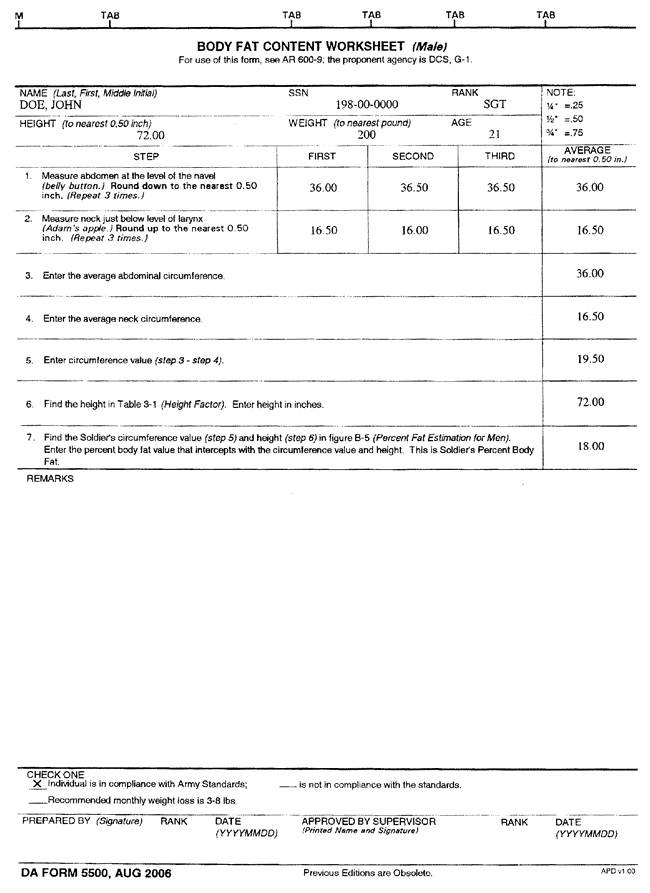
Figure B–1. Sample DA Form 5500
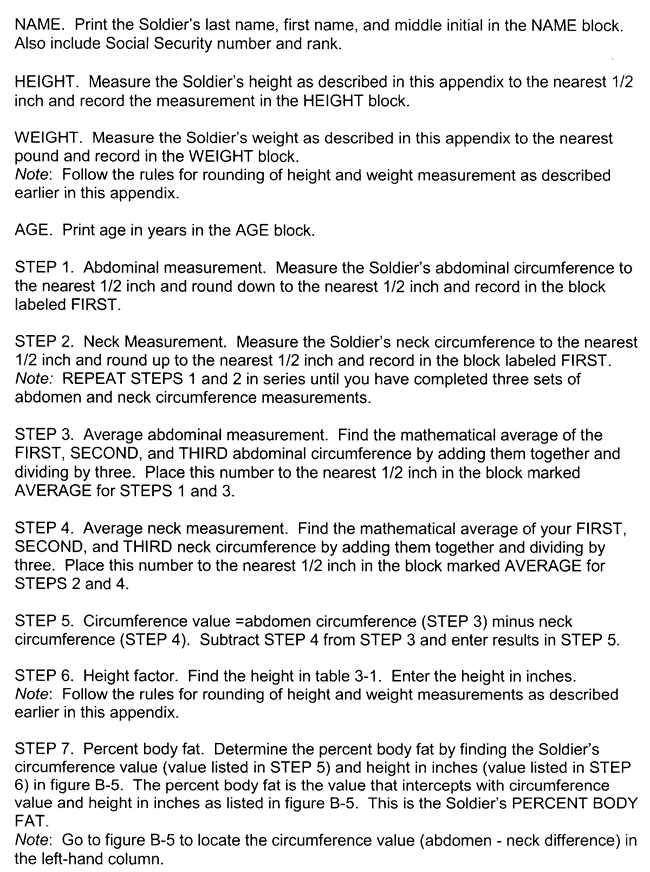
Figure B–2. Instructions for completing DA Form 5500
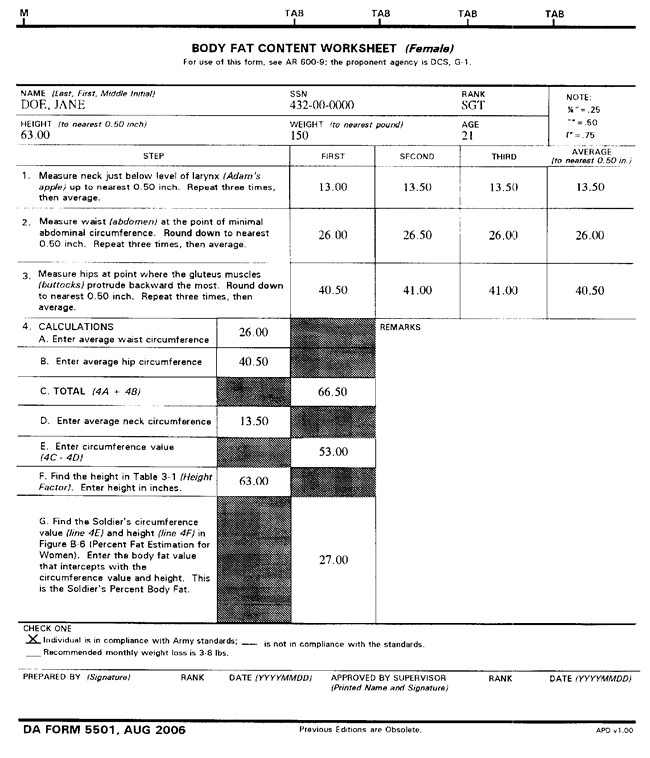
Figure B–3. Sample DA Form 5501
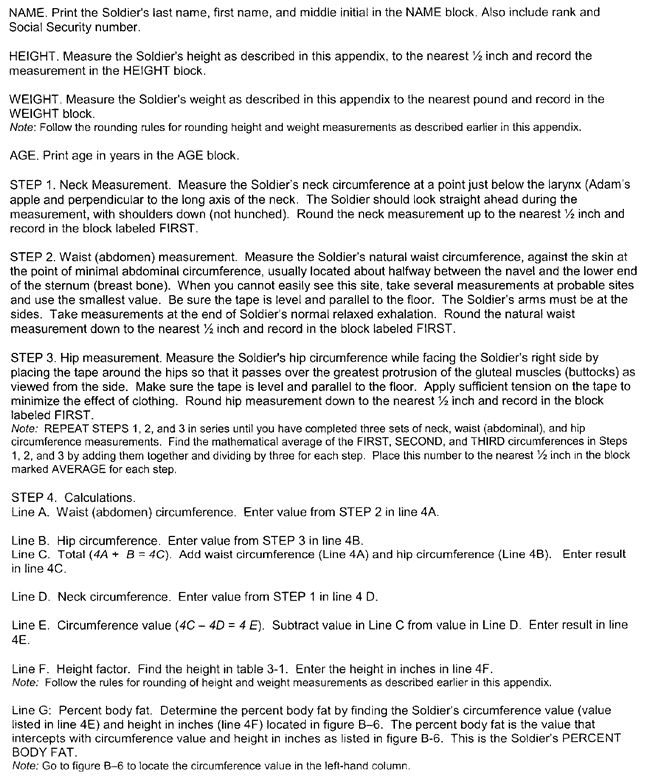
Figure B–4. Instructions for completing DA Form 5501
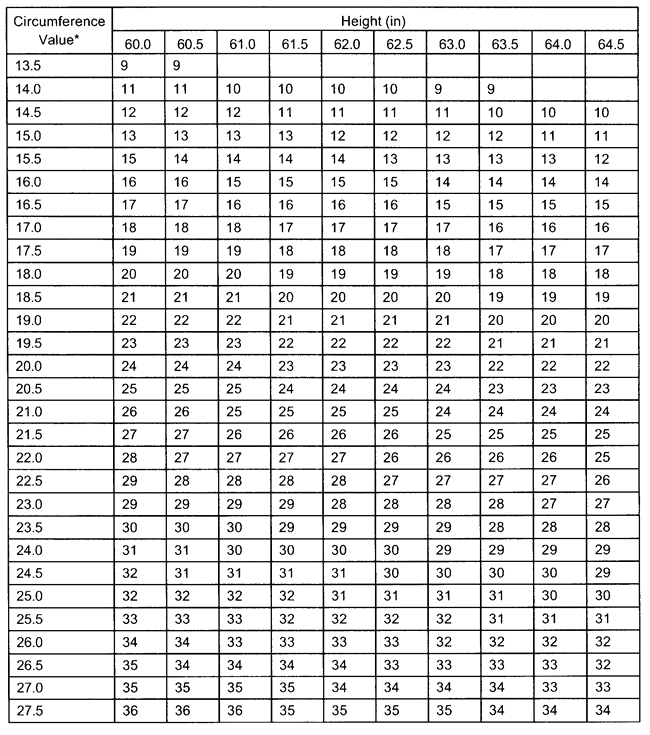
Figure B–5. Percent fat estimates for males
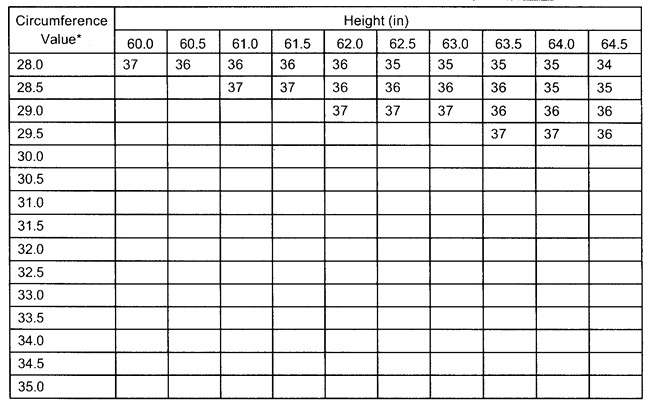
Figure B–5. Percent fat estimates for males—Continued
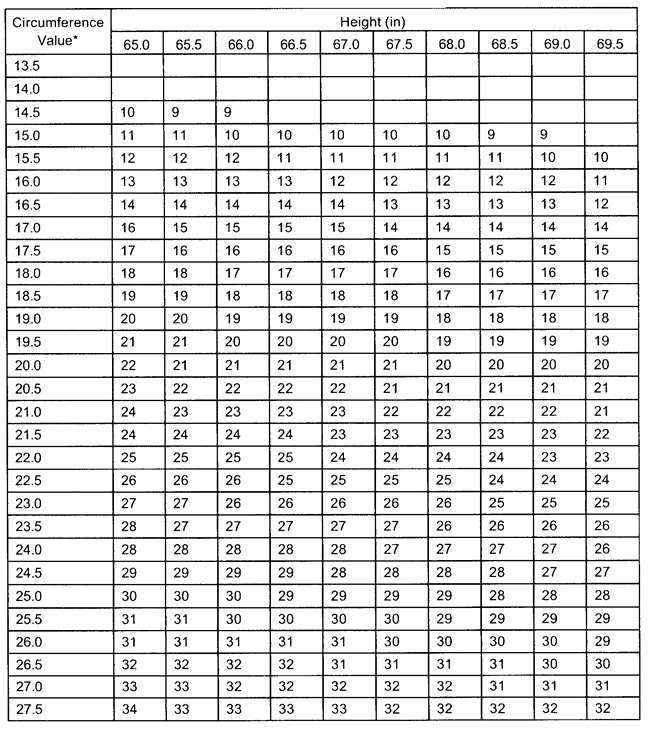
Figure B–5. Percent fat estimates for males—Continued
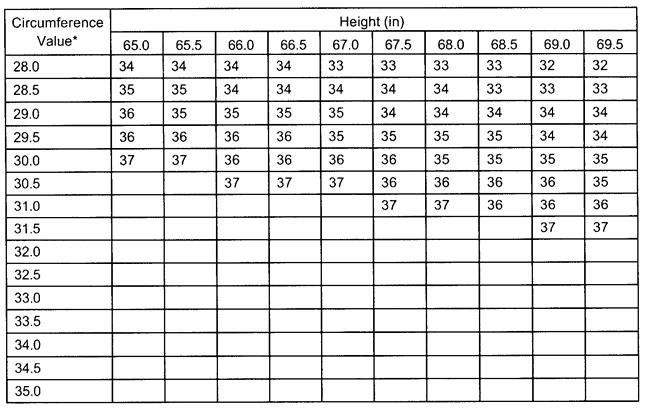
Figure B–5. Percent fat estimates for males—Continued

Figure B–5. Percent fat estimates for males—Continued
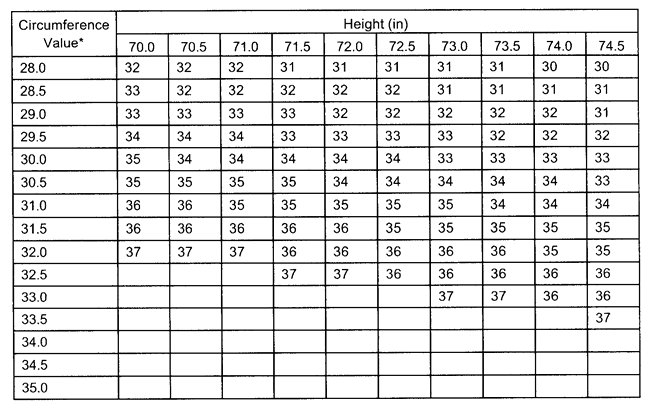
Figure B–5. Percent fat estimates for males—Continued
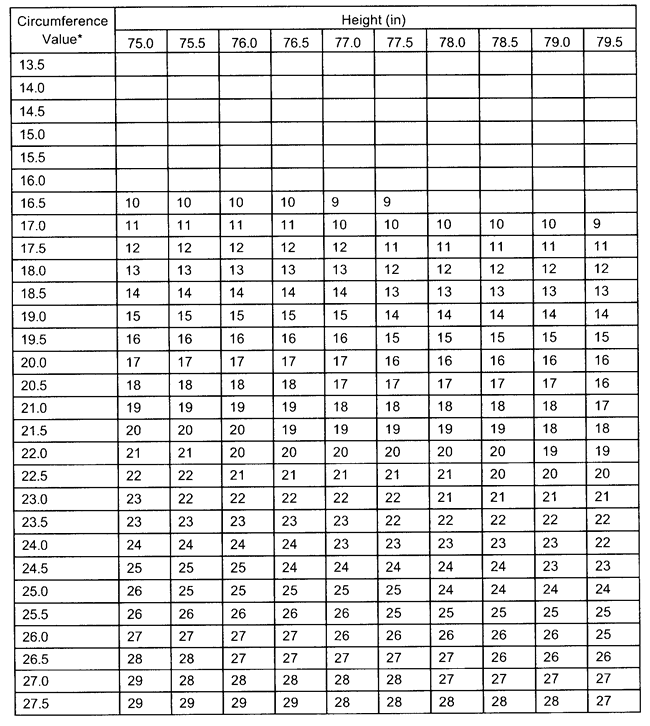
Figure B–5. Percent fat estimates for males—Continued
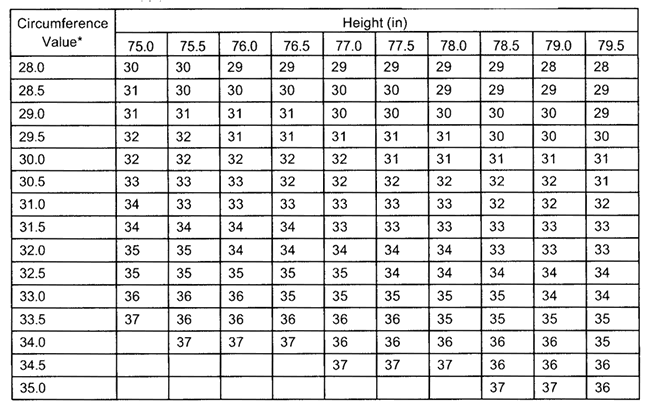
Figure B–5. Percent fat estimates for males—Continued
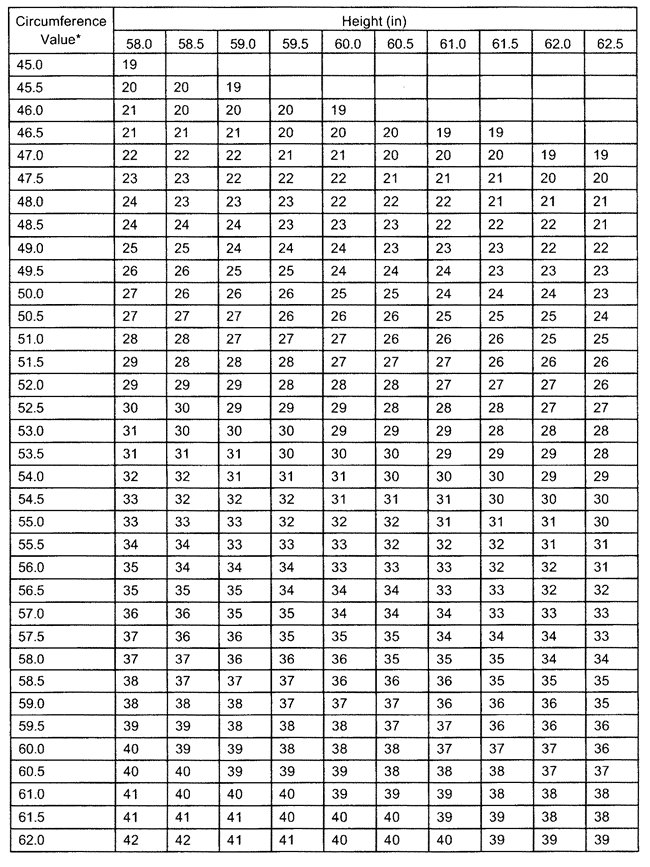
Figure B–6. Percent fat estimates for females
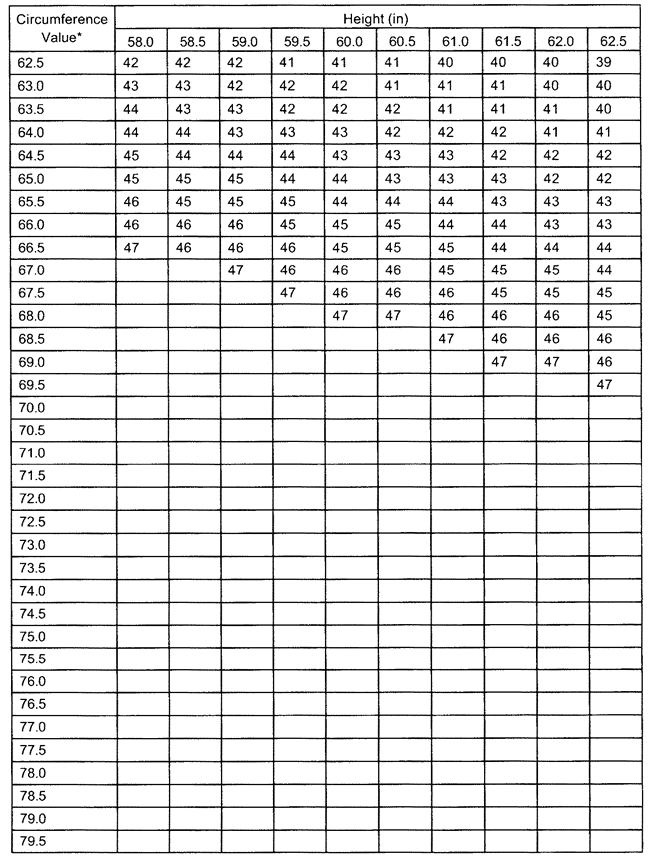
Figure B–6. Percent fat estimates for females—Continued
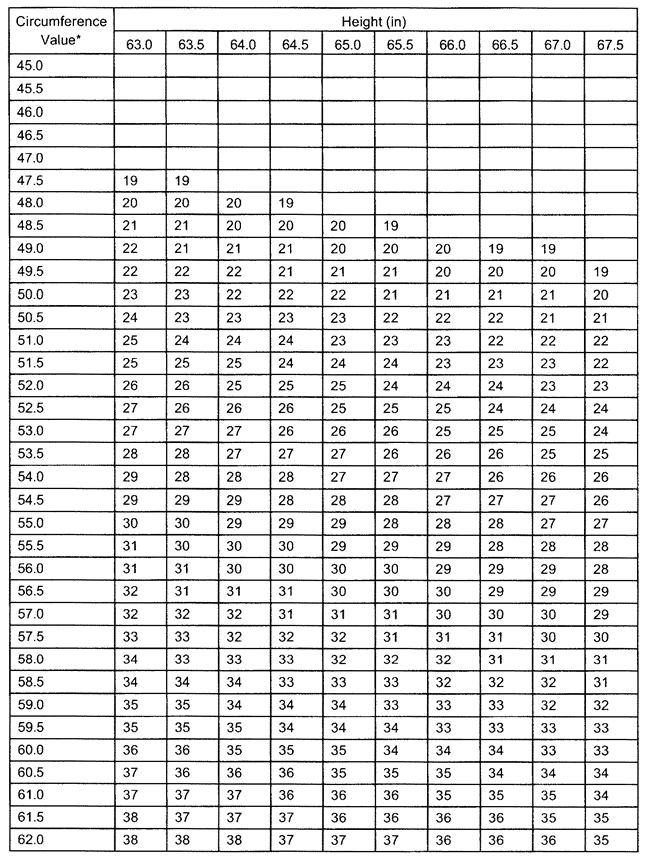
Figure B–6. Percent fat estimates for females—Continued
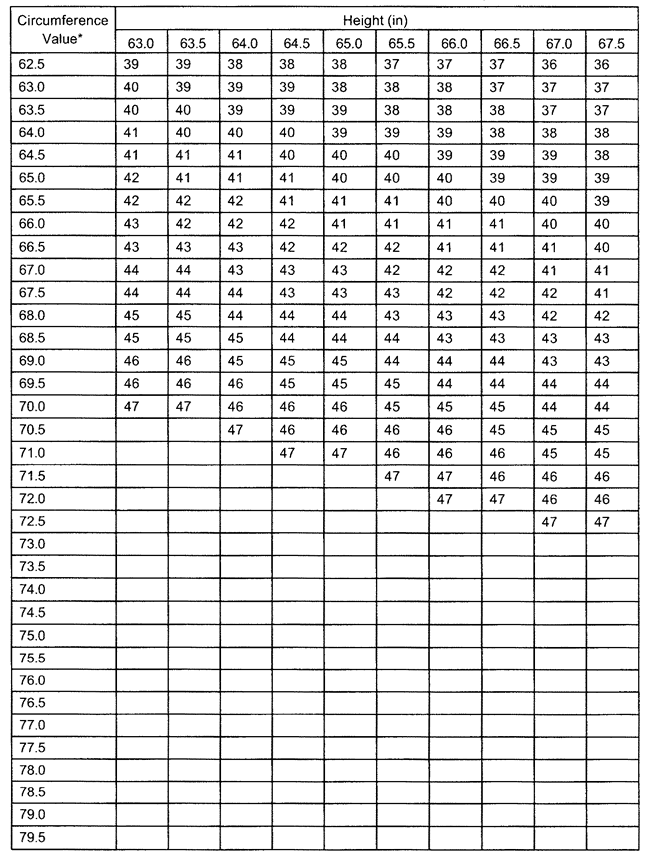
Figure B–6. Percent fat estimates for females—Continued

Figure B–6. Percent fat estimates for females—Continued
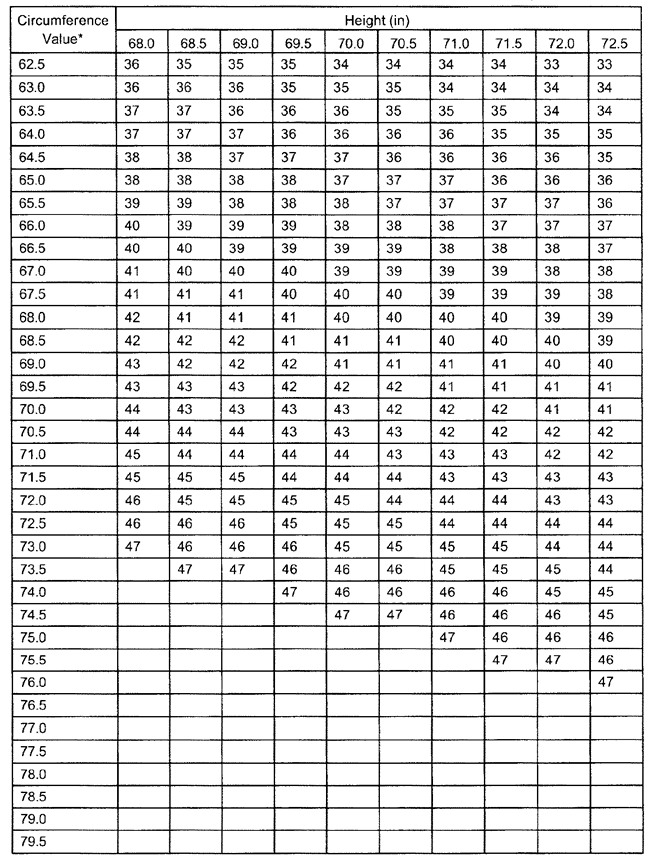
Figure B–6. Percent fat estimates for females—Continued

Figure B–6. Percent fat estimates for females—Continued

Figure B–6. Percent fat estimates for females—Continued
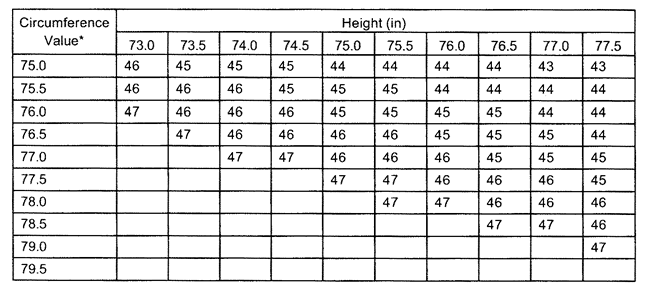
Figure B–6. Percent fat estimates for females—Continued
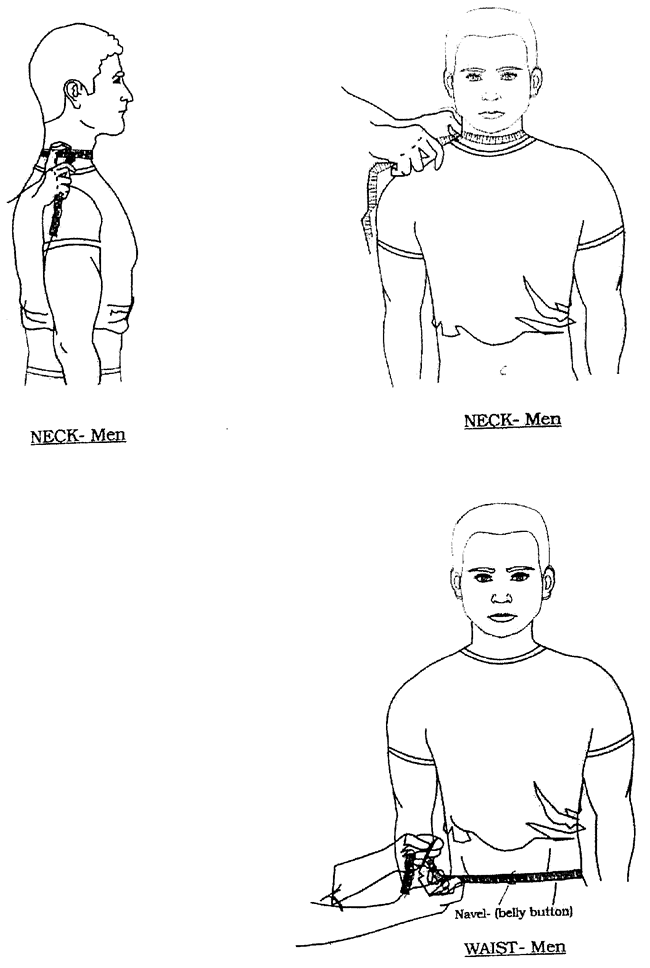
Figure B–7. Male tape measurement illustration
Figure B–8. Female tape measurement illustration
B–4. Circumference sites and landmarks for males
a. Abdomen. Measure abdominal circumference against the skin at the navel (belly button), level and parallel to the floor. Arms are at the sides. Record the measurement at the end of Soldier’s normal, relaxed exhalation. Round abdominal measurement down to the nearest 1⁄2 inch and record (for example, round 343⁄4 to 341⁄2).
b. Neck. Measure the neck circumference at a point just below the larynx (Adam’s apple) and perpendicular to the long axis of the neck. Do not place the tape measure over the Adam’s apple. Soldier will look straight ahead during measurement, with shoulders down (not hunched). The tape will be as close to horizontal as anatomically feasible (the tape line in the front of the neck will be at the same height as the tape line in the back of the neck). Care will be taken so as not to involve the shoulder/neck muscles (trapezius) in the measurement. Round neck measurement up to the nearest 1⁄2 inch and record (for example, round 161⁄4 inches to 161⁄2 inches).
B–5. Circumference sites and landmarks for females
a. Neck. This procedure is the same as for males.
b. Waist. Measure the natural waist circumference, against the skin, at the point of minimal abdominal circumference. The waist circumference is taken at the narrowest point of the abdomen, usually about halfway between the navel and the end of the sternum (breast bone). When this site is not easily observed, take several measurements at probable sites and record the smallest value. The Soldier’s arms must be at the sides. Take measurements at the end of Soldier’s normal relaxed exhalation. Tape measurements of the waist will be made directly against the skin. Round the natural waist measurement down to the nearest 1⁄2 inch and record (for example, round 285⁄8 inches to 281⁄2 inches).
c. Hip. The Soldier taking the measurement will view the person being measured from the side. Place the tape around the hips so that it passes over the greatest protrusion of the gluteal muscles (buttocks) keeping the tape in a horizontal plane (parallel to the floor). Check front to back and side to side to be sure the tape is level to the floor on all sides before the measurements are recorded. Because the Soldier will be wearing gym shorts, the tape can be drawn snugly to minimize the influence of the shorts on the size of the measurement. Round the hip measurement down to the nearest 1⁄2 inch and record (for example, round 443⁄8 inches to 44 inches).
B–6. Preparation of the body fat content worksheets
It is extremely important that you read all of these instructions before attempting to complete the body fat content worksheets. Have a copy of the worksheet when reading these instructions.
a. Figures B–1 through B–8 will provide information needed to prepare the percentage fat worksheets for males (DA Form 5500) and females (DA Form 5501). The worksheets are written in a stepwise fashion. The measurements and computation processes are different for males and females.
b. A worksheet must be completed for Soldiers who exceed the screening table weight (table 3–1) or when a unit commander or supervisor determines that the individual’s appearance suggests that body fat is excessive (para 3–1_a_). The purpose of this form is to help determine the Soldier’s percent body fat using the circumference technique described in this regulation.
c. Before starting, have a thorough understanding of the measurements to be made as outlined in this appendix. A scale for measuring body weight, a height measuring device, and a measuring tape (see specifications in para B–1_d_) for the circumference measurements are also required.
- Chapter 1 Introduction
- Chapter 2 Responsibilities
- Chapter 3 Proper Weight Control
- References
- Standard Methods for Determining Body Fat Using Body Circumferences, Height, and Weight
- Nutrition Guide to the Weight Control Program
- Army Weight Control Program Glossary
- Army Weight Control Program Table of Contents
